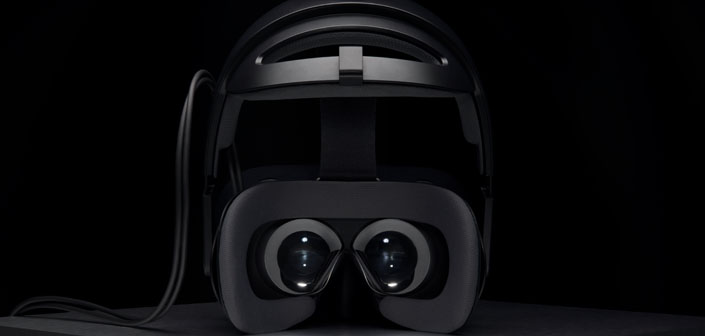The competition for a VR/AR headset that matches the resolution of the human eye has entered a new phase as Finland-based company Varjo puts a new product on the table, the VR-1. Its incredible resolution comes at a price, and with caveats.
Founded in 2016, Varjo aims to improve the image quality over other top-end headsets available on the market, such as HTC’s Vive Pro and Oculus’ Rift. According to Varjo, the VR-1 screen resolution is “20X+ higher than any other VR headset currently on the market,” but only at the center of the screen. This is because the company is using what they call a “Bionic Display,” which is actually a combination of two different displays. First, the headset features one 1,440 x 1,600 pixel, low-persistence AMOLED per eye, at 16 Pixels Per Degree (PPD) – similar to other products available right now. It also includes a microdisplay in the center of the main display, which features a 1,920×1,080-pixel low-persistence micro OLED at 60 PPD.
Basically, this means you’ll have to line up the center display with what you’re looking at if you want to see the so-called “human-eye resolution”.
Additionally, the headset features an integrated 20/20 eye tracker. However, it is currently being used for software interactivity only and not foveated rendering, a technology that increases the quality of the image as your eyes move around the screen. (It’s what HTC is planning to use for the Vive Pro Eye.)
At a $5995 price point, and a yearly service license of $995, Varjo is instead targeting professionals “in industrial design, training, and simulation, architecture, engineering and construction.” The idea is to offer access to realistic immersive environments to save time and money by shortening design life cycles and providing more effective training. Over the past two years, Varjo has been collaborating with various companies to help optimize the VR-1, such as AirBus, Audi, Bohemia Interactive Simulations, Foster & Partners, Saab, Sellen, Volkswagen and Volvo.
The VR-1 is already compatible with some of the top game engines and 3D software out there, including Unreal Engine, Unity 3D, and Autodesk VRED.
“Combining the world’s first human-eye resolution VR product with the VRED high-fidelity rendering allows our joint customers to experience and evaluate virtual prototypes with an unprecedented level of detail and realism,” said Lukas Fäth, Product Manager at VRED, Autodesk. “This is another great step towards holistic digital product review by enabling proper VR HMI Experiences within the digital prototype of a vehicle.”
Later this year, Varjo wants to bring Mixed Reality (MR) into the mix by swapping VR-1’s faceplate with an add-on that will enable a “seamless transition between real, virtual and augmented content.”






